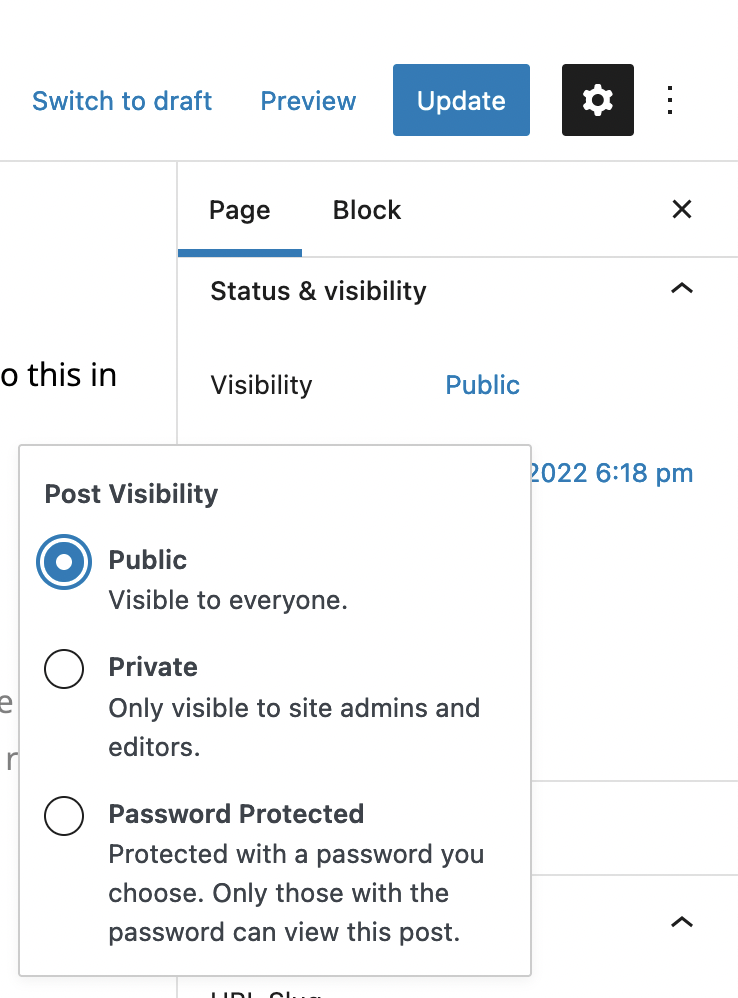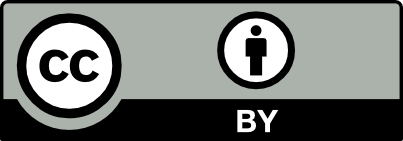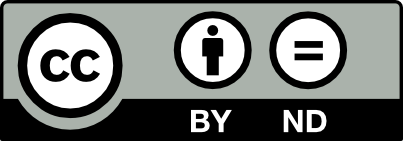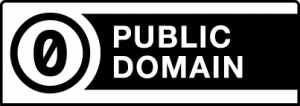Note: It will be helpful to have watched Creative Commons Licenses Explained (assigned as homework) before completing this in-class activity
The process below will help you prepare to incorporate the work of others into your own work by keeping attribution in front of mind. I encourage you to use our time in class today to find examples of each type of resource you might want to include in your project and get acquainted with the attribution and licensing process. By pushing to move through all of the steps listed below during class, you will have an opportunity to see how the resources you choose to reproduce and adapt for your project shape the way you can license your work (you can, of course, reach out to me with questions if you don’t have time to complete this process in class). After completing this activity, you may decide to change your search parameters as you continue with your project. For example, if you find that you want to apply a CC-BY license to your full project but can’t do so because it contains images that have a more restrictive license (like CC-BY-NC), you might decide to search differently, looking only for images with a CC-BY license.
Step 1: Find Resources for your project
Images
Text
Video
Sound
Step 2: Reproduce Resources in your Project, with Attribution (select one for in-class activity)
Images
Sometimes, you will want to incorporate an image alongside the text of your project. When you do this, you can include a caption below the image that includes an attribution statement. If you use the image in a context where captions are not possible (if it is included in the homepage design on your website, for example, or if you use it as a featured image that doesn’t display a caption), you can create a section at the bottom of your page or a separate page on your website to compile the attribution information about those images. This page describing the video “A Shared Culture” offers one example of how that information can be compiled. You can also see the bottom of this page to see how I have offered an attribution statement for the cover image on this website in the footer for the entire website.
Text
If you want to reproduce a complete section (a chapter, a section of a chapter, a paragraph) of an openly licensed work, you can follow the instructions here to create an attribution statement that you include as you introduce this material. In this context, the attribution statement occurs right as you would typically be introducing a source you are quoting or paraphrasing. You can see how I do this on “The Art of Citation, The Art of Adaptation.”
Video and Sound
The best way to reproduce video and audio content that you don’t want to adapt on your webpage is to embed content that is already published on a streaming site. When you embed, the attribution is already handled because you are not technically reproducing the audio file. The embedded content points people to the place where it was published originally. Through the magic of embedding, we don’t actually have to leave this page to watch or hear it.
Step 3: Adapt Resources for your Project, with Attribution (select one for in-class activity)
Images
If you don’t already have experience editing images, I encourage you to experiment first by uploading the image you want to adapt to canva and playing around with that free tool. If your image will be incorporate with a caption, you can compose your caption in a separate document. If there is no space for a caption, you can incorporate an attribution statement into the image.
Text
If you find a text that is licensed CC-BY, CC-BY-NC, CC-BY-SA, or CC-BY-NC-SA (essentially, anything without an ND in the license) the person who created the text has give you permission to adapt it in whatever way you would like. This means you can make a copy of this text and make any changes you want to it without keeping track of exactly where those changes happened! Whoa. The only thing you need to do is include a clear attribution statement on the page.
Video
If you manage to find a video that has a creative commons license (without an ND) and you can find the actual video file, you can remix that video using video editing software like iMovie (included with all Apple computers) or DaVinci resolve (free software). If you haven’t edited a video file before, I encourage you to search for instructional resources online and experiment. It can be really fun!
Sound
If you manage to find a podcast that has a creative commons license (without an ND) and you can find the actual audio file, you can remix that audio file using audio editing software like GarageBand (included with all Apple computers) or Audacity (free software). As with video editing, there is a learning curve. But it’s worth the investment of time!!
Step 4: License Your Project, with Attribution
If you’ve taken care to keep track of all of the work you want to use in your project, you now get to decide how you will license your overall project. You have many options, but you will be limited by the license on the works you have included. I think it’s best to think first and foremost, though, about how you want people who find your work to be able to use that work. To help you think through this, I list the ways you might license your work.
Keep Your Work Private
It is absolutely possible to create digital work that remains visible only to you and me, the instructor. If you would like to do this in OpenLab, you can keep it as a draft or you can click “private” as you see below:

All Rights Reserved
This is the default for content that you make public on our course website, but I should note that this is not necessarily the case on all web platforms. If you publish your content on Twitter, Instagram, TikTok, or another social media platform, you should review their terms of service to understand your rights as a creator.
- Twitter Terms of Service
- Instagram Terms of Service
- YouTube Terms of Service
- Facebook Terms of Service
- TikTok Terms of Service
In most cases, the terms of service on social media platforms explain that by publishing on the platform you grant the company a “a worldwide, non-exclusive, royalty-free license” to do anything they would like with your content, though you retain your copyright.
Select A Creative Commons License
If you would like to make it possible for others to reproduce and perhaps remix the work you create, you can select one of the creative commons licenses. In what follows, I adapt the description of creative commons licenses from the “Anatomy of a CC License” unit in a creative commons training program I participated in. The description, created by Creative Commons, is licensed under ?????. The full unit is extremely helpful, but I have cut down the content and added some of the things you might want to consider as a student when making this decision.
Creative Commons licenses are standardized tools, but part of the vision is to provide a range of options for creators who are interested in sharing their works with the public rather than reserving all rights under copyright.
The four license elements—BY, SA, NC, and ND—combine to make up six different license options.
All of the licenses include the BY condition. In other words, all of the licenses require that the creator be attributed in connection with their work. Beyond that commonality, the licenses vary whether (1) commercial use of the work is permitted; and (2) whether the work can be adapted, and if so, on what terms.
The six licenses, from least to most restrictive in terms of the freedoms granted reusers, are:

The Attribution license or “CC BY” allows people to use and adapt the work for any purpose (even commercially) as long as they give credit to the creator. Choose this license if you want your work used as much as possible and you want recognition for the work you’ve done. Note that reusers will attribute the username you use on the site where you publish your work, so it is possible to use a pseudonym (though the site will still provide clues about your identity)

The Attribution-ShareAlike license or “BY-SA” allows people to use and adapt the work for any purpose (even commercially), as long as they give credit to the creator and make any adaptations they share with others available under the same or a compatible license. This is CC’s version of a copyleft license. Choose this license if you only want your work to remain unrestricted in way it is reused.

The Attribution-NonCommercial license or “BY-NC” allows people to use the work, or adaptations of the work, for noncommercial purposes only, and only as long as they give credit to the creator. If you would be upset if someone starting printing and selling t-shirts with your creative work on it, consider including “NC” in your license.

The Attribution-NonCommercial-ShareAlike license or “BY-NC-SA” allows people to use and adapt the work for noncommercial purposes only, and only as long as they give credit to the creator and make any adaptations they share with others available under the same or a compatible license. Choose this license if you want your work to remain restricted against commercial use when it is reused.

The Attribution-NoDerivatives license or “BY-ND” allows people to use the unadapted work for any purpose (even commercially), as long as they give credit to the creator. They may also adapt the work for their own personal use but may not share any adaptations publicly.

The Attribution-NonCommercial-NoDerivatives license or “BY-NC-ND” is the most restrictive license offered by CC. It allows people to use the unadapted work for noncommercial purposes only, and only as long as they give credit to the creator. They may also adapt the work for their own personal use but may not share any adaptations publicly.
To understand how the different license options really work, let’s dig into the different license elements. Attribution is a part of all CC licenses, and we will dissect exactly what type of attribution is required in a later unit. For now, let’s focus on what makes the licenses different.
Commercial vs. noncommercial use

NonCommercial (“NC”) As we know, three of the licenses (BY-NC, BY-NC-SA, and BY-NC-ND) limit reuse of the work to noncommercial purposes only. In the legal code, a noncommercial purpose is defined as one that is “not primarily intended for or directed towards commercial advantage or monetary compensation.” This is intended to provide flexibility depending on the facts surrounding the reuse, without over specifying exact situations that could exclude some prohibited and some permitted reuses.
It’s important to note that CC’s definition of NC depends on the use, not the user. If you are a nonprofit or charitable organization, your use of an NC-licensed work could still run afoul of the NC restriction, and if you are a for-profit entity, your use of an NC-licensed work does not necessarily mean you have violated the term. For example, a nonprofit entity cannot sell another’s NC licensed work for a profit, and a for-profit may use an NC licensed work for non commercial purposes. Whether a use is commercial depends on the specifics of the situation. See our CC NonCommercial Interpretation page here for more information and examples.
Adaptations
The other differences between the licenses hinge on whether, and on what terms, reusers can adapt and then share the licensed work. The question of what constitutes an adaptation of a licensed work depends on applicable copyright law (for a reminder, see Unit 2). One of the exclusive rights granted to creators under copyright is the right to create adaptations of their works or, as they are called in some places, derivative works. (For example, creating a movie based on a book, or translating a book from one language to another.)
As a legal matter, at times it is tricky to determine exactly what is and is not an adaptation. Here are some handy rules about the licenses to keep in mind:
- Technical format-shifting (for example, converting a licensed work from a digital format to a physical copy) is not an adaptation regardless of what applicable copyright law may otherwise provide.
- Fixing minor problems with spelling or punctuation is not an adaptation.
- Syncing a musical work with a moving image is an adaptation regardless of what applicable copyright law may otherwise provide.
- Reproducing and putting works together into a collection is not an adaptation of the individual works. For example, combining stand-alone essays by several authors into an essay collection for use as an open textbook is a collection and not an adaptation. Most opencourseware is a collection of others’ open educational resources (OER).
- Including an image in connection with text, as in a blog post, a powerpoint, or an article, does not create an adaptation unless the photo itself is adapted.

NoDerivatives Two of the licenses (BY-ND and BY-NC-ND) prohibit reusers from sharing (i.e. distributing or making available) adaptations of the licensed work. To be clear, this means anyone may create adaptations of works under an ND license so long as they do not share the work with others in adapted form. This allows, among other things, organizations to engage in text and data mining without violating the ND term.

ShareAlike Two of the licenses (BY-SA and BY-NC-SA) require that if adaptations of the licensed work are shared, they must be made available under the same or a compatible license. For ShareAlike purposes, the list of compatible licenses is short. It includes later versions of the same license (e.g., BY-SA 4.0 is compatible with BY-SA 3.0) and a few non-CC licenses designated as compatible by Creative Commons (e.g., the Free Art License). You can read more about this here, but the most important thing to remember is that ShareAlike requires that if you share your adaptation, you must do so using the same or a compatible license.
Public domain
In addition to the CC license suite, Creative Commons also has an option for creators who want to take a “no rights reserved” approach and disclaim copyright entirely. This is CC0, the public domain dedication tool.

Like the CC licenses, CC0 (read “CC Zero”) uses the three-layer design—legal code, deed, and metadata.
The CC0 legal code also uses a three-pronged legal approach. Some countries do not allow creators to dedicate their work to the public domain through a waiver or abandonment of those rights, so CC0 includes a “fall back” license that allows anyone in the world to do anything with the work unconditionally. The fall back license comes into play when the waiver fails for any reason. And finally, in the rare instance that both the waiver and the “fall back” license are not enforceable, CC includes a promise by the person applying CC0 to their work that they will not assert copyright against reusers in a manner that interferes with their stated intention of surrendering all rights in the work.
Like the licenses, CC0 is a copyright tool, but it also covers a few additional rights beyond those covered by the CC licenses, such as non competition laws. From a reuse perspective, there still may be other rights that require clearance separately, such as trademark and patent rights, and third party rights in the work, such as publicity or privacy rights.